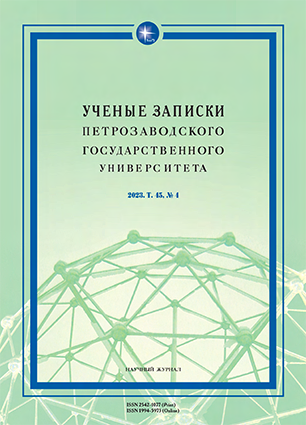Методология оценки полноты интерсемиотического перевода
METHODOLOGY FOR ASSESSING THE COMPLETENESS OF INTERSEMIOTIC TRANSLATION
Author(s): Irina Nikolaevna Filippova, Lyubov Yurievna VasilenkoSubject(s): Semiotics / Semiology, Film / Cinema / Cinematography
Published by: Петрозаводский государственный университет
Keywords: intersemiotic translation; transformation; asymmetry of language means; film adaptation; polymodality; cinematic text; transmutation; exclusion; inclusion;
Summary/Abstract: The article presents the experience of developing a methodology that allows us to assess the completeness of the intersemiotic translation of a work of fiction into a feature film as objectively as possible. The criterion of completeness of translation, which is important in translation studies in connection with the transition to a different semiotic system (cinema), acquires new aspects that are not subject to simple application from the sphere of interlanguage translation achievements. The polymodality of the film text requires the development of special methods for assessing the quality of intersemiotic translation and explication of support points (estimated characteristics of the compared texts). The authors use general scientific methods of quantitative analysis, graphical interpretation of data, generalization and abstraction, and linguistic descriptive, component and comparative analysis. The article presents an assessment of the completeness of intersemiotic translation based on objective (calculated in absolute and relative units) results of quantitative analysis of the content of source text and target text (in dictionary units and percentages) and timing of voiced source text and screen target text. The transformation of a monomodal verbal text into a polymodal adiuovideoverbal film text does not allow to achieve complete identity with the original due to the exclusion of a significant amount of source text (75 %) with a minor substitution of verbal content by means of the cinematic language (25 % of the total transmitted source text content). The conducted research provides a convincing argument for the introduction of the concepts of exclusion and inclusion into the theory of intersemiotic translation. The asymmetry of the means of transmitting content (in source text – only verbally, in target cinematic text – polymodally) is accompanied by a transformation of the character composition, a change in the idiostyle of the source text author and is due to the expansion of new participants into the communication process and the sophistication of the communicative code.
Journal: Ученые записки Петрозаводского государственного университета
- Issue Year: 45/2023
- Issue No: 4
- Page Range: 54-60
- Page Count: 7
- Language: Russian

